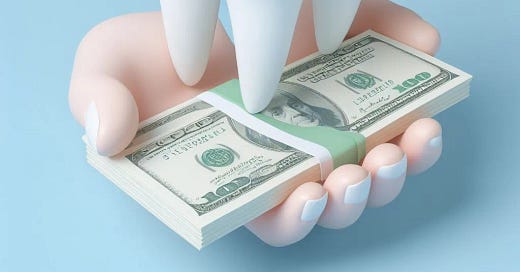Oral health - luxury or human right?
Access to necessary and affordable oral health care is out of reach for many Australians.
Oral diseases are ubiquitous, both at a global and a national level. They disproportionately affect populations experiencing social disadvantage, with for example dental caries more common in children and adults from low-income households. We know that poor oral health disrupts sleep and speech, affects appearance, self-esteem and psycho-social well-being, and as a result has wide ranging impacts on quality of life and participation in education and employment.
Importantly, these diseases do not occur in a vacuum, and are influenced by a range of individual, social and commercial factors.
Article 25 of the Universal Declaration of Human Rights states:
Everyone has the right to a standard of living adequate for the health and well-being of himself and of his family, including food, clothing, housing and medical care and necessary social services, and the right to security in the event of unemployment, sickness, disability, widowhood, old age or other lack of livelihood in circumstances beyond his control.
The Australian Attorney General’s Department has advice for people who have a role in Commonwealth legislation, policy and programs that says that this right to health should be a consideration when working on legislation, policies or programs that relates to access to health facilities, goods, including essential medications and services, especially for vulnerable or marginalised groups.
Unfortunately, oral health is still very much seen as a luxury for many Australians, and not an essential service. Poor oral health remains one of the strongest indicators of poverty and inequality, and a healthy smile is almost considered a status symbol.
Affordability is a key issue that drives this disparity in oral health outcomes. That is particularly an issue in Australia where access to publicly funded dental care is constrained, and the majority of care in the private system relies on high out-of-pocket expenditure. Families living in low income are faced with the unenviable task of weighing the cost and value of spending on oral health care against other competing costs – particularly housing, energy and food. We are seeing this play out in the way that many people are being forced to rob from their future to fund their present – using their retirement savings to pay for dental treatment. As I have previously shown, the bulk of these cases are from people on low-middle incomes ($45,000-120,000), who do not have access to a publicly funded dental safety net like they do for their medical care.
Addressing affordability and access are the key challenges facing the dental profession. They are not easy problems to solve, with a range of competing interests making consensus challenging. But if we accept oral health as a fundamental human right as our starting point, then that creates a pathway for finding a solution.
The World Health Organisation Global strategy and action plan on oral health 2023–2030 has a target that 80% of the global population should be entitled to essential oral health care services by 2030. Australia remains a long way from that target.





